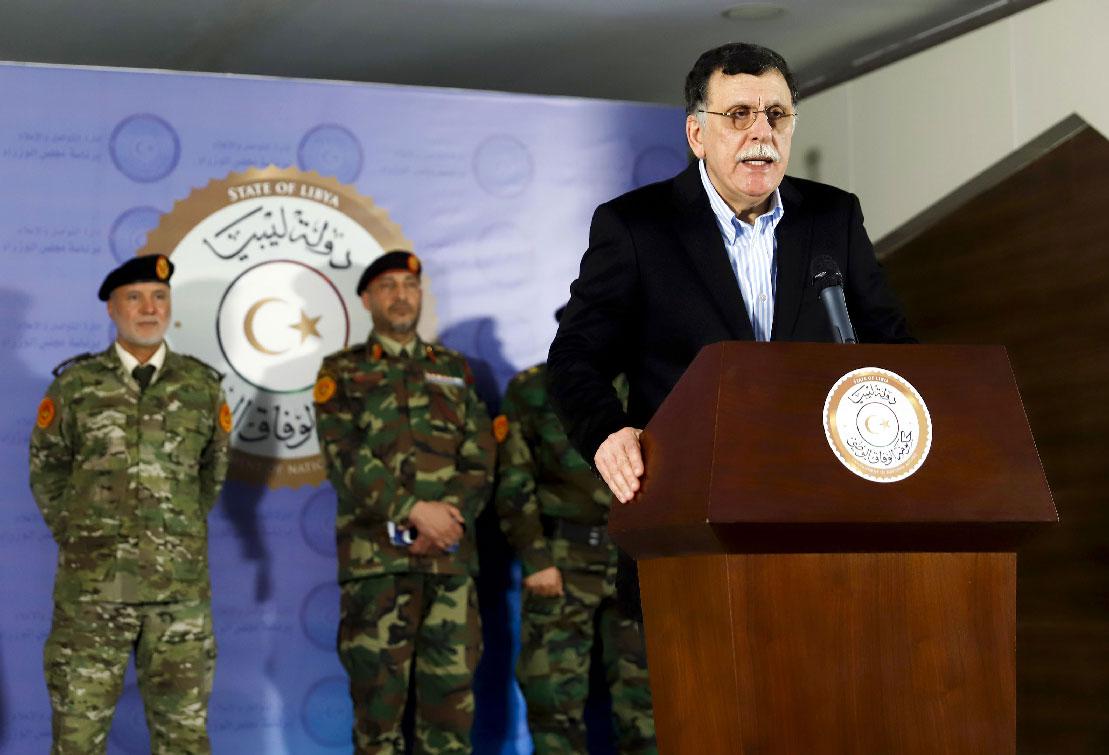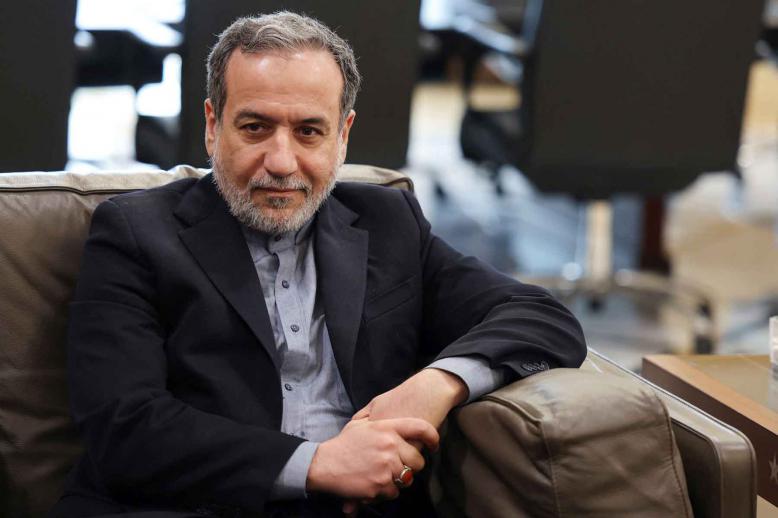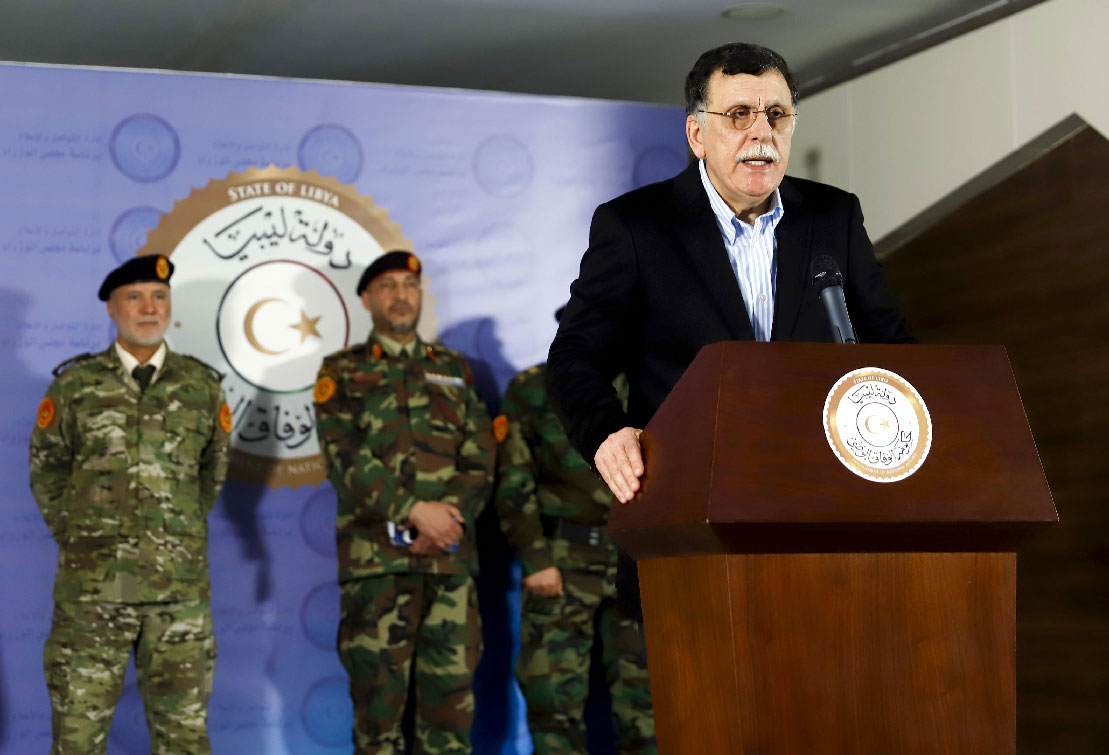Turkey-backed forces alter balance of power in Libya
TUNIS - Western Libya is currently the scene of rapid military developments and surprising moves that might redraw the map of the balance of power on the ground.
The previous status quo was shaken by recent multipronged attacks on the coastal cities of western Libya by Islamist militias and other Turkey-backed mercenary groups that have enabled Fayez al-Sarraj and his government to score limited victories in time and space.
Tunisian and Libyan military sources revealed to The Arab Weekly that Libya’s western coastal strip witnessed two days of major military movements, especially in the town of Rigdalin, where hundreds of military vehicles and equipment were gathered, along with thousands of militia members loyal to the Islamist-aligned Sarraj government.
The build-up coincided with the movement of large military convoys equipped with heavy artillery towards the town of Jameel and al-Assa Military Base near the Tunisian border, which means that the town of Rigdalin is now serving as a concentration and mobilisation centre for militias and mercenaries given its strategic location.
The town lies on the Libyan coast at about 120km west of the capital, Tripoli, 10km south-east of the town of Jameel, and about 10km north-east of the city of Zuwara.
On the other side, the Libyan National Army (LNA) forces, led by Field-Marshal Khalifa Haftar, began re-organising its ranks and pushing important military reinforcements to the western coastal region. A large mobilisation operation was monitored in the city of Rajban. It came after Haftar met with the chiefs of staff of the land, sea and air forces devoted to assessing the military developments in the western region and planning response measures to any new attack on Watiya airbase.
These mobilisation activities on both sides herald a new round of military confrontations in the region, amid expectations that Islamist militias loyal to Sarraj, backed by mercenaries sent by Turkish President Recep Tayyip Erdogan, are planning to launch a new attack on Watiya airbase, located 140km south-west of the capital, Tripoli.
These scenarios are justified on the ground by the fact that Watiya base was a tough nut to crack for the Sarraj government and its militias, despite their launching repeated attacks on the base for nearly two weeks with Turkish drones.
Officials of the Sarraj government said that their militias are now positioned on the outskirts of the base and waiting for orders to attack.
It seems that the Sarraj government, encouraged by its militias’ progress in the western coastal strip, wants to move quickly to take Watiya and thus gain complete control of western Libya. A couple of days ago, Sarraj vowed to take over the base. He made those statements after meeting with a number of his military officers, including Osama al-Juwaili, commander of the western region and the joint operations room, Muhammad al-Haddad, commander of the central region and Major General Abdul Basit Marwan, commander of the Tripoli region.
Some media outlets affiliated with the Sarraj government leaked reports that during that meeting a new plan was prepared by Juwaili to recapture the Watiya military base before the month of Ramadan, thereby ensuring control of the entire western coastal strip, and along the borders with Tunisia, especially the two land crossings – Ras Jedir and Al-Dhiba/Wazan.
However, Libyan military sources raised questions about the accuracy of the leaks and considered them a new ploy to divert the LNA attention from the real goal of the current military moves. The sources pointed out that the closest and most likely target is the city of Tarhuna, which is still seen as a gaping hole in the government’s plans to gain control of the western coastal strip.
The head of the Consultative State Council, Khaled al-Meshri, a leader in the Justice and Construction Party, the political arm of the Muslim Brotherhood in Libya, confirmed this hypothesis. He stated that the government “controls 500km of the coast and is going to liberate the remaining towns such as Tarhuna." In previous media statements, Meshri said the military developments in the coastal strip “give new importance to redrawing the geopolitical map of Libya."
Observers were not surprised by Sarraj government officials' newfound confidence. They linked it to ground developments brought about by increased Turkish involvement in the area. There has been a major influx of Turkish mercenaries, weapons and equipment over the past weeks, and Turkish officers are now running the operations. For all practical purposes, the battle is now directly between the LNA and Turkey.
Libyan political analyst Faraj Zidan said that “the battle is now taking place between the army forces, led by Field-Marshal Khalifa Haftar, and the Turkish intelligence services, which are now leading the forces affiliated with the Government of National Accord." He added in television statements broadcast April 14 that the Libyans “are now dealing directly with a Janissary force that includes a group or combination of factions, many of which are non-Libyan.”
During the past few weeks, the influx of Turkish military elements into Libya under various labels, such as advisers and military experts, has accelerated, along with the influx of intelligence officers. The role of Turkish SADAT International Defence Consultancy Inc. and its mercenaries in the battles waged in the vicinity of Tripoli and the western region is now out in the open.
Jemai Guesmi is a Tunisian writer.
This article was originally published in The Arab Weekly.







